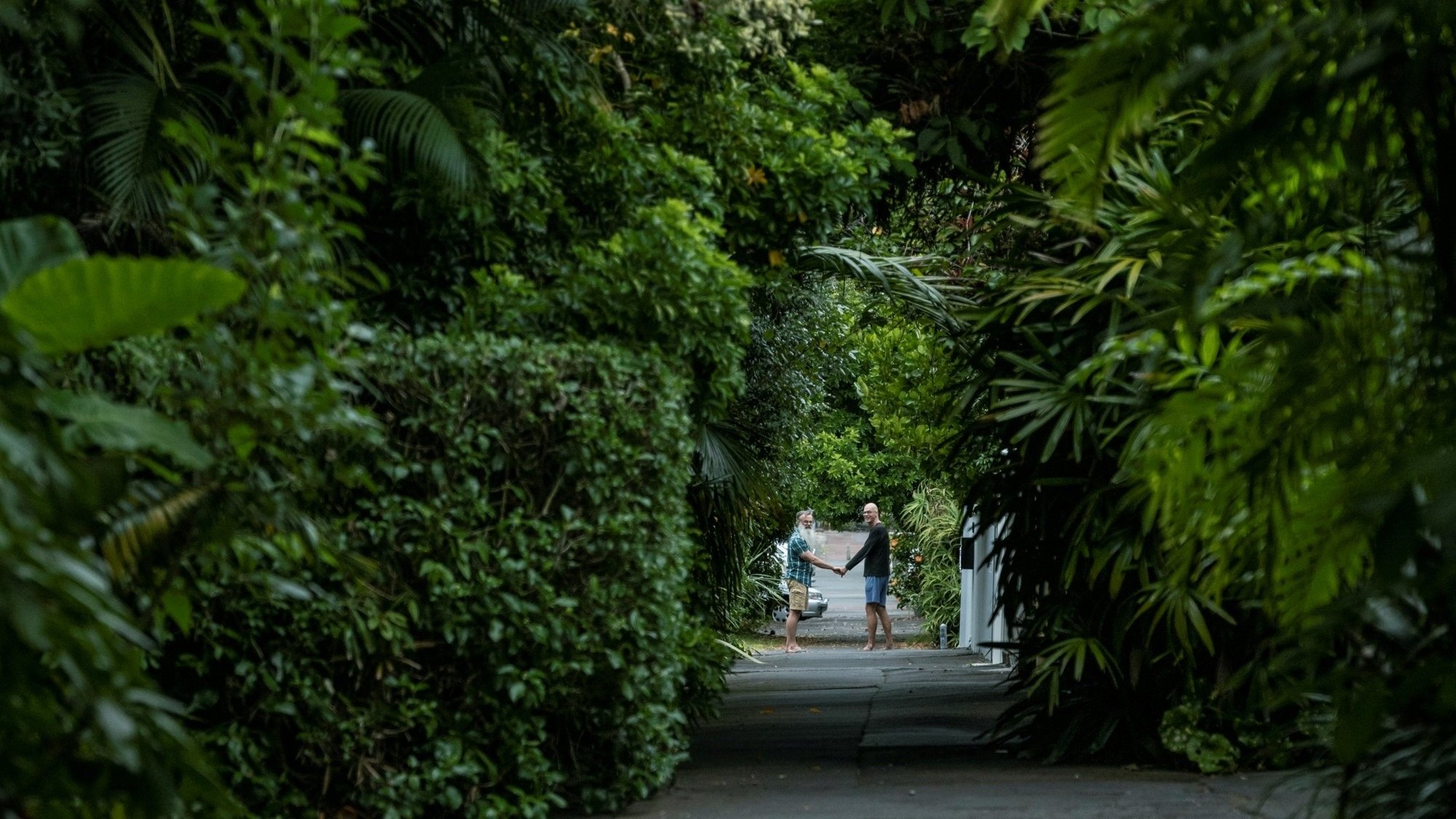Nothing leaves the property
Nothing leaves the property
By Mark van Kaathoven and Gene Dillman
Ben’s piece on using leaves in the last newsletter sets the perfect stage for our contribution from the Urban Jungle. Whereas Ben wrote about the autumn and winter clean up and fallen leaves, we will describe how we deal with what we call our “carbon deposits” during the growing season and how these techniques might help you as gardeners deal with some of the more difficult gardening spots on your properties.
Our first rule is nothing leaves the property. We do add material from elsewhere at times but no organic matter leaves the garden. Our clay soil in Freemans Bay needs the humic acids and vegetable matter to work properly: holding and releasing water, anchoring plants and giving up nutrients. The bacteria and fungi present help connect soil and plants and transfer the messages and nutrients through this complex and fascinating economy. Due to their hard work we see results above ground.
The second rule is use the organic matter dynamically—do not move it very far or put it in a composter. Why you may ask? Does any of us have time to move things once, let alone twice in the garden? Keep it close to the source. You can also be certain that the source will need the very nutrients it sheds for the next cycle of growth. What could be a more perfect fertilizer for that next cycle than the prunings from the last tidy-up? If you compost this somewhere else, you lose much of the nutrient value and you do not stimulate beneficial bacteria and fungi in the root zones of the very plants you want to flourish.
And, the third rule is relax. Sure wilting material looks a bit forlorn on the ground. Give it 10 days in Auckland weather and it disappears into the background and in six weeks it has become lovely, decomposing mulch giving up its goodness for a new cycle of life. We never comment that the bush looks messy—so take a lesson for the garden. And, remember you only have to screen something with about 30% green matter for it to disappear from view for most people. Your happy, healthy plants should do that quite well.
Now, for the really helpful stuff. Let’s say you have a lovely tree which has completely taken over an area and the ground is covered with winding surface roots. How does one plant anything in this setting without either damaging the tree, or spending a lot on understory plants which may struggle to survive at best? Mark approaches this with copious (50-100cm) layers of tree chips put down in autumn and left for a bit to start decomposing. Then he adds green material of around 50cm and keeps that topped up for two to three months. Once it has broken down understory plants can be planted directly into the lowest layer of the mulch which is now a beautiful soil. The tree’s roots can breathe through the chips and with the planting taking place above the root zone there is no damage to the tree. From that point maintenance is a matter of topping up the mulch. Give it a try in your problem areas and see the results for yourselves.
Happy Gardening from Mark van Kaathoven and Gene Dillman at the Urban Jungle

